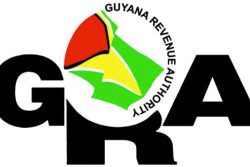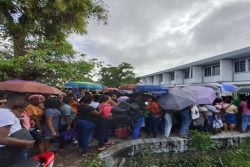“The pen is mightier than the sword” – first used in 1839 by English writer Edward Bulwer-Lytton
The films, “The Valachi Papers” (1972) and “The Post” (2017), examine the intrigue generated by the written word in two critical areas of American life. In the first instance, la Cosa Nostra (commonly known as the Mafia) is the subject of a non-fiction book by Peter Maas, which explored the inner workings of the underworld through the eyes of the first ever government witness from within the Mafia. “The Post” examines the ramifications surrounding the Washington Post’s determination to expose the government’s role in the Vietnam War by publishing the ‘Pentagon Papers.’
Here in the Caribbean, our source of intrigue created by the plume stems from a straightforward review of the management of the game of cricket. Why did the Patterson Report create such bitter resentment from the West Indies Cricket Board of Control (WICBC) – and still does – that it steadfastly refused to implement the major proposals?
Warning signs
At the WICBC ‘s Annual General Meeting in Antigua in 1992, Teddy Griffith, the former Barbadian first-class cricketer (also a regular member of their 1960s Jamaican Shell Shield side), who enjoyed a successful business career in the Caribbean, was appointed to form and chair a special committee. Griffith’s committee was tasked with devising a strategic plan to cover the Board’s operations over the next five years, and to submit a report to the Board’s ordinary general meeting scheduled for October of that year. Efforts to unearth references to the ‘Griffith Report’ in subsequent Board releases came up empty. It is worth noting that Griffith later served as WICBC President for one term spanning 2003/05.
The swift creation of this committee came on the heels of Barbados’ boycott of the South Africa/West Indies Test in April at the Kensington Oval (In Search of West Indies Cricket – The Boycotted Test Match – 19th March, 2023), where the WICBC estimated that it had suffered revenue losses of Bds$300,000. This setback followed the record deficit of US$450,000 incurred during the 1991 Australian Tour of the Caribbean.
These huge losses were the early warning signs to the WICBC that the modern game was demanding a more professional approach than its archaic management structure, which dates back to 1927, could sustain. The game was developing rapidly on an ever widening international scale, both on and off the field, and the WICBC was faltering to keep pace. The West Indies continued to skim along on the strength of their winning ways until the bubble burst and the losing began.
Nothing takes a toll on the spirit of sporting fans like perennial losing. In February 2007, as public dissent continued to rise with the atrocious on-the-field performances, then WICBC President Ken Gordon announced the Board’s decision to appoint a special committee to report on the governance of cricket in the region.
The high-powered Governance Review Committee on West Indies Cricket was chaired by former Jamaica Prime Minister, P J Patterson, and included two commissioners, former Caricom Secretary-General Alister McIntyre, and noted Caribbean writer Dr Ian McDonald. Tony Deyal, then Secretary of the WICBC was appointed Secretary to the Committee.
The Governance Committee’s initial concern over burdening the limited financial services of the WICBC was quickly dispelled by two corporate sponsors of West Indies cricket. The Bank of Nova Scotia agreed to underwrite the funds required for travel, meetings, research and other aspects related to the Report. Digicel consented to cover the costs of editing and printing, as well as the eventual presentations to the Board, Caribbean governments and the public. The committee duly expressed its gratitude for the generous assistance, which in no way reduced the sponsors’ financial obligations to the WICBC.
The Terms of Reference given to the committee were: (1) To review the performance of the WICBC, past and current, and to assess its strengths and weaknesses; (2) To consult at whatever level may be considered desirable with past and present administrators, past or present players, cricketing organizations or the general public; (3) To consider the composition and structure of the WICBC and make recommendations which will improve its overall operations, governance, effectiveness, team performance and strengthen its credibility and public support; (4) To report by June 30, 2007 (subsequently extended by agreement to September 15). The relatively short timeline initially given to the committee suggests a desperate board seeking an instant solution.
The review
The comprehensive Governance Report begins with the standard fare of Preface, Acknowledgements, and Foreword. In the Overview the extent of the challenges facing West Indies cricket at that point are summarised under several captions. Under ‘The Crisis’, the Committee observed, “Cricket is not simply a sport. It is an activity that has evolved over more than a century and it is intertwined with the social, cultural and economic evolution of the Region. The fortunes of the game are deeply embedded in the human psyche. When the team is doing well, there is everywhere, a mood of confidence, optimism and goodwill. When it is doing badly, attitudes turn ugly, reservations are expressed, and there is everywhere a searching investigation of contributory factors and of ways out of the crisis. We are at such a decisive point today.”
‘The Process of Consultation’ enables readers to appreciate the swath the Committee covered to afford as many persons and organisations the opportunity to contribute their expertise, knowledge or experience to the cause. Besides meetings, oral presentations, reviewing written reports, analyses, and studies on every aspect of the game as it pertains to the region, consultations were sought widely in the West Indian community on cricket, and further afield.
The 126-page Report is divided into seven sections. Part One: ‘The Structure of West Indies Cricket and its Institutions’, examined the role of the WICBC, the WICB committees, the Territorial Boards, Regional Institutions, women’s cricket, the importance of the involvement of past players and the relationship with the ICC.
In examining ‘The Role, Functions, Contributions of the Territorial Boards’ the committee placed its fingers on some of the underlying problems contributing to the across-the-board decline.
“3.3 The Packer experience [in bold print] added two vital factors to the makeup of the Test teams: a steely desire to win and unequalled fitness. Buttressed by a great team, the West Indies went on to enjoy unparalleled success for a decade or more.
“3.4 Unfortunately, at this juncture and onwards several factors contributed to the failure to produce the quantum of quality players to ensure success.
(a) Restricted participation in County Cricket.
(b) The diminished attention paid to cricket in schools.
(c)The decline in the club system.
(d) A growing culture which paid only lip service to the virtues of discipline and fitness, qualities only too necessary for success.
(e) Competition from other sports.”
Part Two, titled ‘The Crisis’, is a study in contrasts. The first half highlights the role of cricket in Caribbean culture, its influence on heritage and identity. The second is a depressing analysis of the current hopeless state of the game in the Caribbean. The penultimate paragraph noted, “The clash between the cricket fraternity and cricket administrators and the seeming inability of the WICB, whose structure and style was out of sync with social reality, to feel and respect the very public function over which it presided and to check its own weakening , through conflict, of player morale and performance.”
The final entry, 9.7, sounded an ominous bell, “The challenges are clear and the solutions are not beyond that which the Region can accomplish, if the requisite decisions are made and implemented.”
Part Three, ‘Securing the Future’, the longest section of the Report, documented the necessary steps required to revive and sustain the growth of the game. The importance of maintaining interest through the schools and a network of clubs, Twenty/20 (now referred to as T20), the development of a cricket academy and a professional cricket league were emphasised. ‘Taking Team Performance to a Higher Level’ is a seven-page expose on the standards which the committee recommended that the players be held accountable to. Good health, fitness, preparation, training, coaching and discipline – the application of the Code of Conduct “without exception, without fear or favour, without extenuation or excuse”- are among the top priorities. The subjects of doping, match-fixing and illegal betting were also duly noted. The responses from regional governments (included in this section) were heavily critical of the WICB’s governance of the sport, and numerous recommendations for change were presented.
Part Four addressed ‘The New Governance Structure’. In the introduction, the committee conveyed two important findings. The first, an article published in 1999 by Felix Redmill, a Kittian, presented the argument that “quality in cricket demands quality in management.” The committee “found it so relevant and germane to our work that we sought and obtained the Author’s kind permission to repeat its publication in our accompanying annexure.”
The following excerpt from Redmill’s article appeared in bold print. “The Board needs to have a clear strategy for West Indian cricket. They must think strategically and plan the route to achieve it. They must then put the best people in the appropriate managerial positions, with clearly defined responsibilities and the authority to discharge them.”
Immediately following this quote was arguably the biggest bombshell unearthed by the committee.
“15.3 At our first meeting, we were told of the existence of the Griffith Report. Despite our best efforts, we were unable to locate it anywhere until our persistence eventually located a copy during the course of our final meeting. [One can only speculate that this stroke of fortune was due to an act of conscience.]
“We find it alarming that such a seminal document was buried in an obscure location and even more so that its far-reaching recommendations, dating back to 1992 during the presidency of Sir Clyde Walcott, had been totally ignored by successive administrations. [This entire paragraph is underlined in the Report].
“What plausible explanation can be given for its total disregard? We owe it to the history of West Indies cricket that never again should it be lost in obscurity.
“Virtually all our recommendations had already been formulated, by the time this publication was unearthed, but they have now been bolstered by the wisdom and vintage of 15 years.”
The Griffith Report’s comprehensive analysis and proposals on the subject of structure was then quoted verbatim in the Patterson Report. The two-page extract was harsh in its opinion of the Board’s structure and functioning, thus it is not surprising that the Griffith Report never saw the light of day after it was presented to the Board. One line will suffice to illustrate its bluntness: “Most Member Boards are administratively weak and depend on the support of voluntary, part-time executives and officers.”
The committee’s proposals for a revamped Governance Structure were set forth in precise and concise terms over ten pages. The crux of their recommendations was a two-tiered system of governing West Indies cricket: a Cricket West Indies Council and a West Indies Cricket Board. The concept of a council was driven by the imperative, “West Indies cricket belongs to the people of the West Indies” which the committee adopted to guide their deliberations and conclusions. The council would reflect adequate representation of shareholders and stakeholders from across the region, including Territorial Cricket Boards, Caricom, West Indies Players Association, Past Players, Business Sector, Media, West Indies Umpires Association, Caribbean Labour Congress, West Indies Women’s Organisation, Tourism and Tertiary Institutions. The council would comprise 23 members who would meet annually to determine policies and strategies and provide guidance for the development of the game.
The committee, in trying to please everyone, might have gone over the top here. A 23-member committee could be unwieldy when it comes to decision making. Perhaps 15 members would have been a better suggestion, with some classifications of the membership alternating voting seats every three-year term, but retaining the right to attend the annual gathering as observers.
The Cricket West Indies Board would be composed of 15 members who would act in accordance with the broad outlines settled by the council. This proposed board would be responsible for the proper management and development of all aspects of the game in the Region. Here, the Patterson Committee shrewdly hinted at a potential push back from the incumbent Board, whilst simultaneously glossing it over.
“16. 7 (b) We would have preferred a smaller Board, but our consultations lead us to the inexorable view that the Territorial Boards will not relinquish their rights and, further, that their presence could serve as a catalyst for the vital development of domestic cricket in order to enhance regional performance.”
Part Four also addressed the necessity of a professionally functioning Secretariat and the importance of a healthy labour relationship between the Board and the West Indies Players Association (WIPA). The latter was examined in great detail in five pages, and gave alarming insight – the public was well aware of the bad blood between the WICBC and the WIPA – of how low relations had really sunk.
Part Five, ‘Economic and Financial Issues’, examined the game in the region as a business entity, and the importance of managing it as such. The commercial potential, economic challenges facing the small market Caribbean as traditional industries declined, and the need to adapt to the increasing globalisation of the game and the opportunities which it presented, were dissected.
The vital roles of the public and media to the game are discussed in Part Six, with the committee emphasising the damage done to the image of cricket in the Region by, “…faulty, tardy, sometimes contradictory and even non-existent communication with the public has quite often exacerbated failure, left vital questions unanswered, and created suspicion and contention.”
Part Seven summed up all of the committee’s recommendations and listed the next steps for implementation. The committee’s two-page conclusion yearned for a hopeful future, as this excerpt suggested, “It is our prayer that very soon the West Indian public be able to share in the undiluted enjoyment of the game, and the days of ‘cricket lovely cricket’ will return once more.”
Three appendices supplied the List of References, Sources of Written Responses, and Persons Consulted. Annexures section included six written submissions to the committee.
The WICBC, which, ironically, had set up the Patterson Committee, was unhappy with its seismic proposals and its response, startling at the time, was to ignore all that was written, condemning it to permanent exile.





